
1.02.2022
Wieder einmal löste ein SpaceX Falcon9 Start UFO-Alarm aus, welcher nach viermaligen Verschieben wegen schlechten Wetters in den frühen Morgenstunden für spektakuläre Erscheinungen am Himmel sorgte.
Über den Start berichteten wir hier bereits mit vielen Screenshots von der LIVE-Übertragung und sahen selbst schon die Effekte beim Start. Nur müssten eigentlich die US Bürger eigentlich den Anblick von startenden Raketen kennen, da die Rakete nicht wie üblich Richtung Westen flog sondern gegen Süden, sahen auch die Menschen in Südamerika die mit dem Start verbundenen Himmelserscheinungen und lösten auch dort Rätselraten aus.
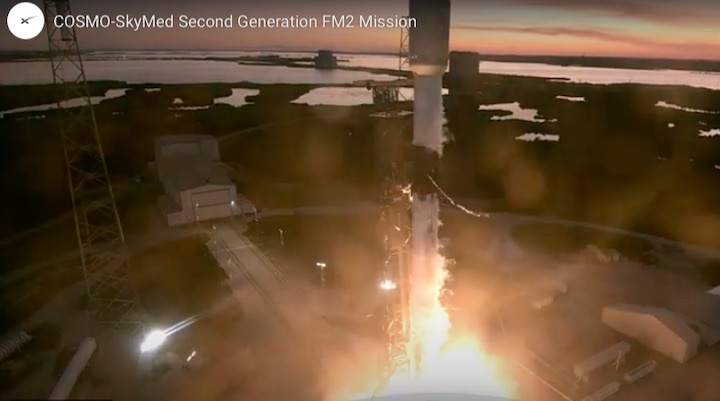
Start von SpaceX Falcon9
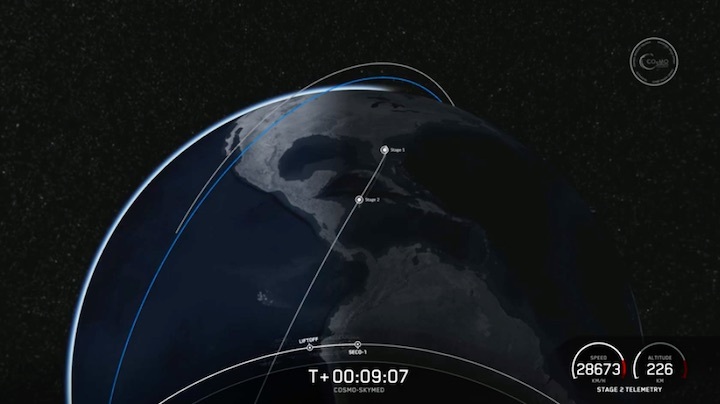
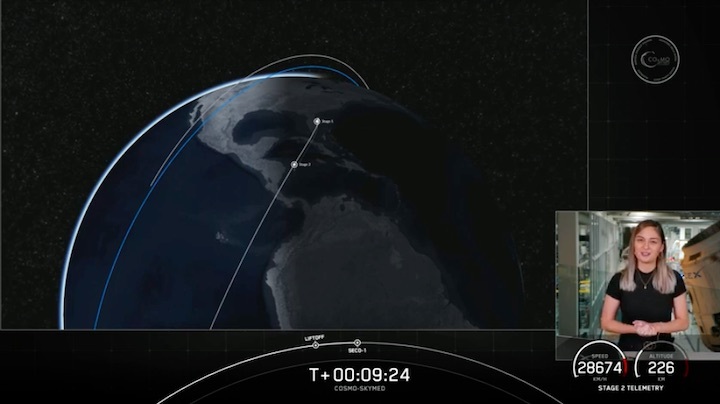
Flugkurs der SpaceX Falcon9 Rakete
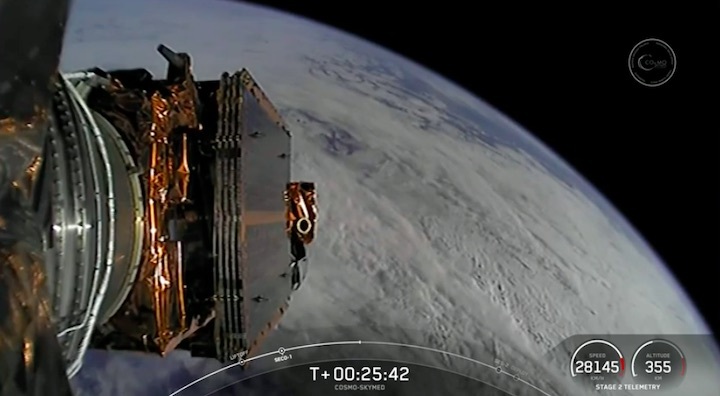
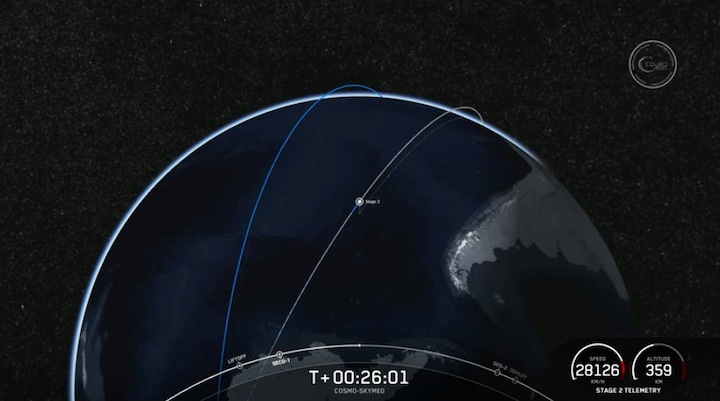
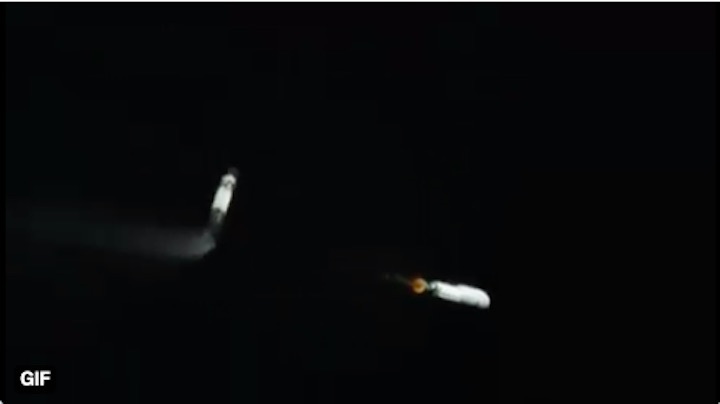
https://twitter.com/Planetguy_Bln/status/1488480470195224576?s=20&t=2xsZwzFeP2iuuDG-Nc10cQ
Kurz nach Trennen der ersten Stufe auf Flug in den Orbit
Quelle SpaceX
+++
Blick auf Twitter-Meldungen zu dem verursachten UFO-Alarm in Nord- und Südamerika:

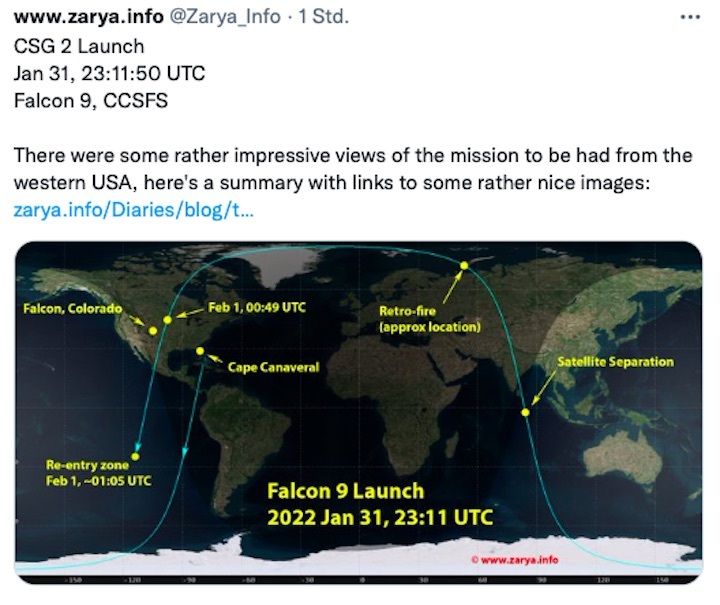
+++
Und Himmelsspektakel über Startgebiet:
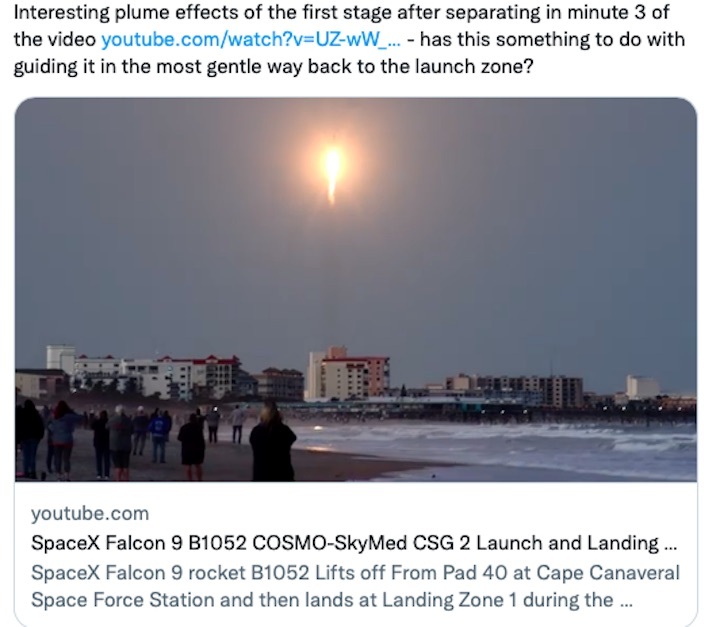
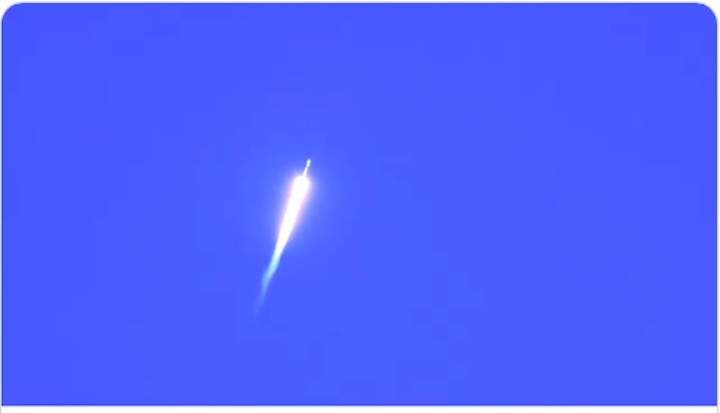
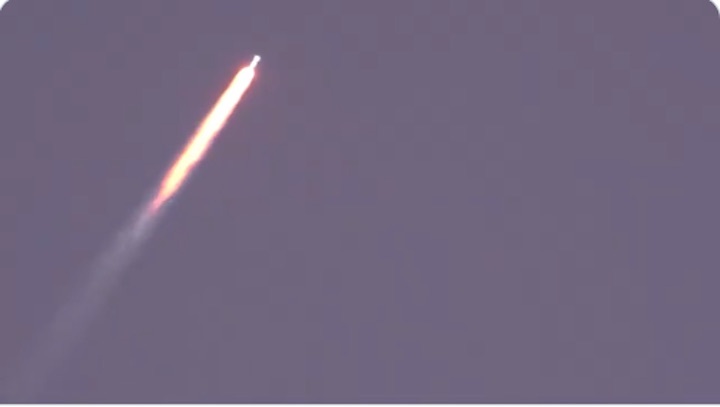
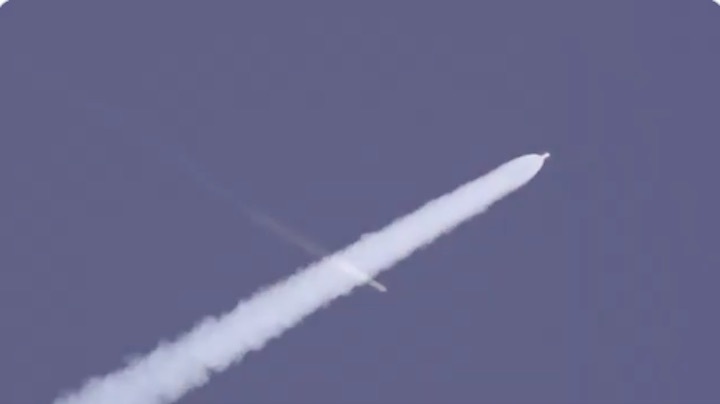
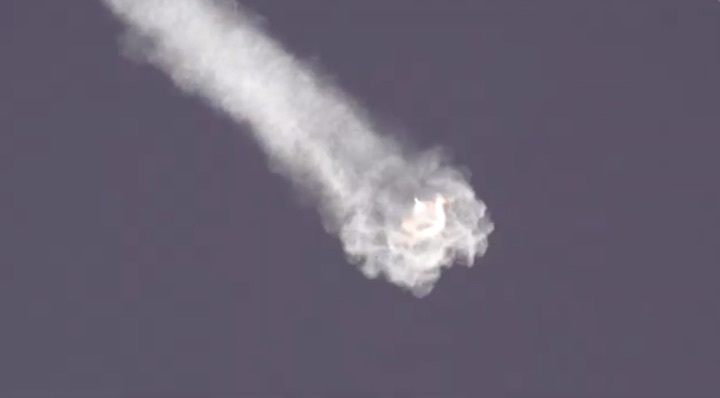
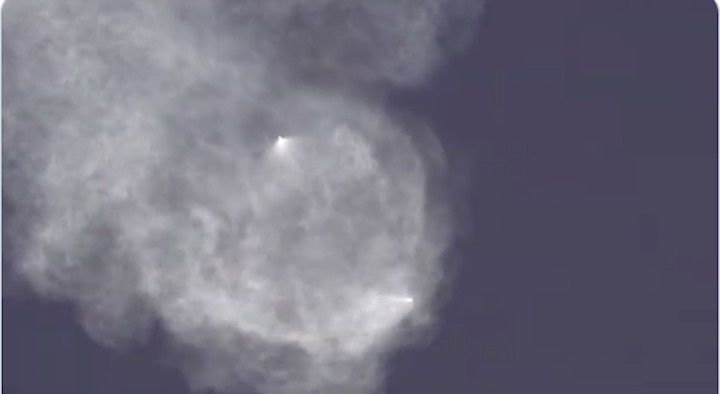
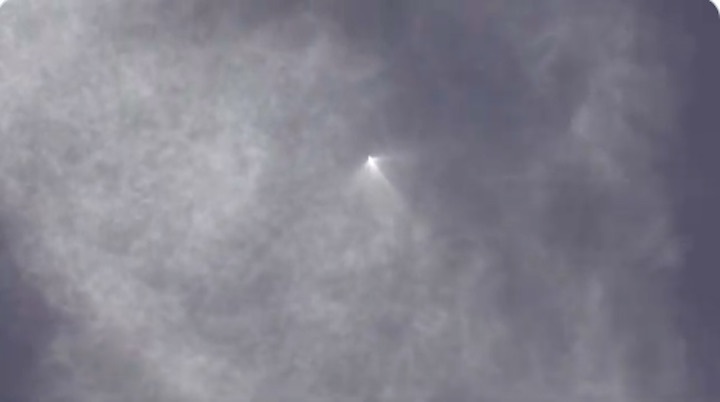
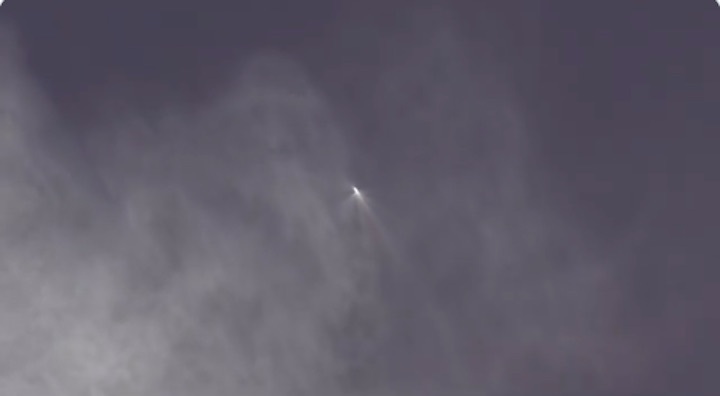


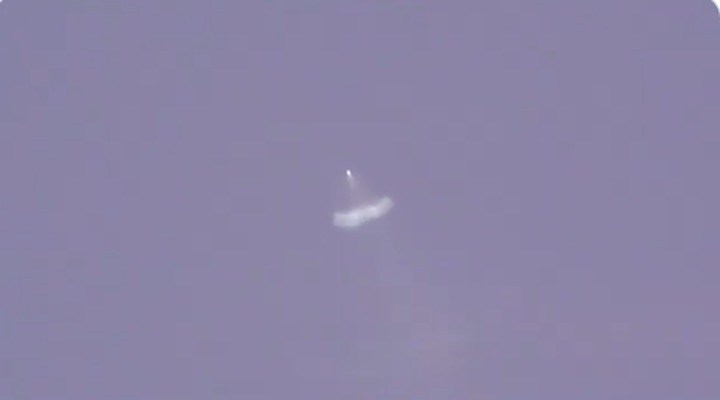
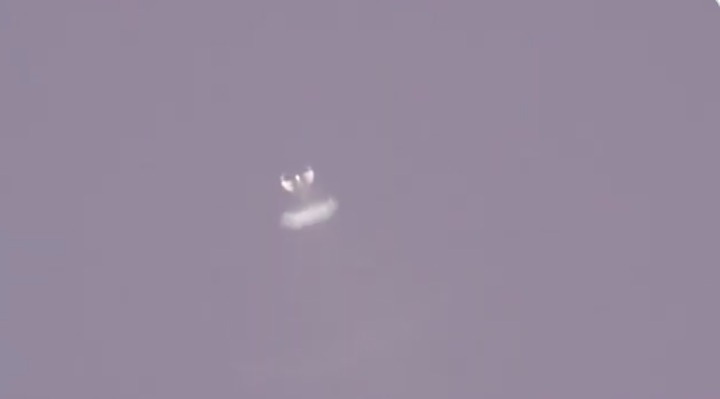
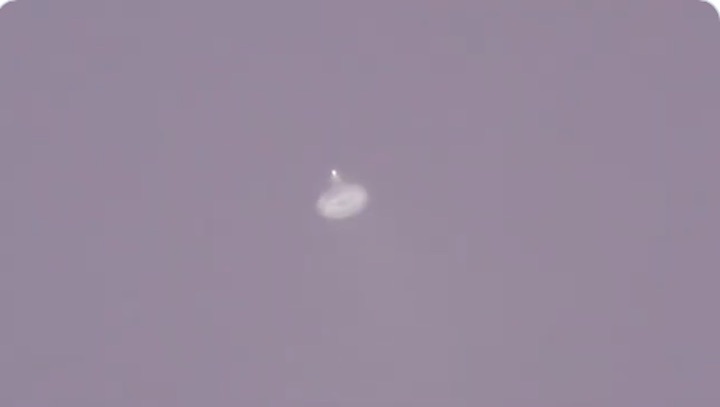
Quelle: Twitter, YouTube
+++
SpaceX debuts converted Falcon Heavy booster on spectacular Italian satellite launch
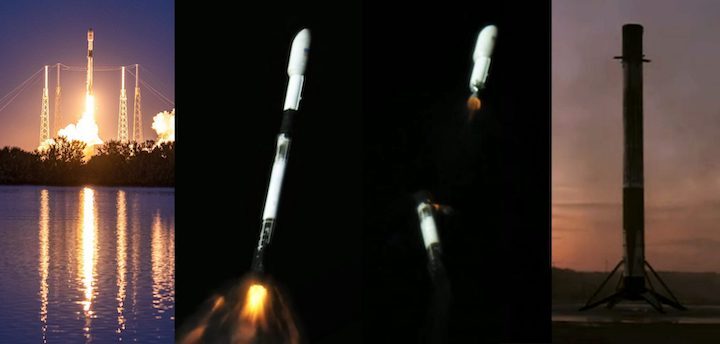
For the first time, SpaceX has converted a flight-proven Falcon Heavy side core into a Falcon 9 booster and successfully launched the reborn rocket, carrying an Italian Earth observation satellite to orbit with one of the most visually spectacular Falcon launches in recent memory.
After a tortured campaign of four scrubbed or aborted launch attempts between January 27th and 30th, Falcon 9 finally lifted off from SpaceX’s Cape Canaveral Space Force Station (CCSFS) LC-40 pad at 6:11 pm EST (23:11 UTC) on Monday, January 31st. The converted Falcon Heavy booster performed perfectly on its first solo mission, successfully carrying a Falcon upper stage and Italy’s CSG-2 synthetic aperture radar (SAR) Earth observation satellite to an altitude of 70 km (~45 mi) and a velocity of ~1.7 km/s (Mach 5) – effectively the edge of space.
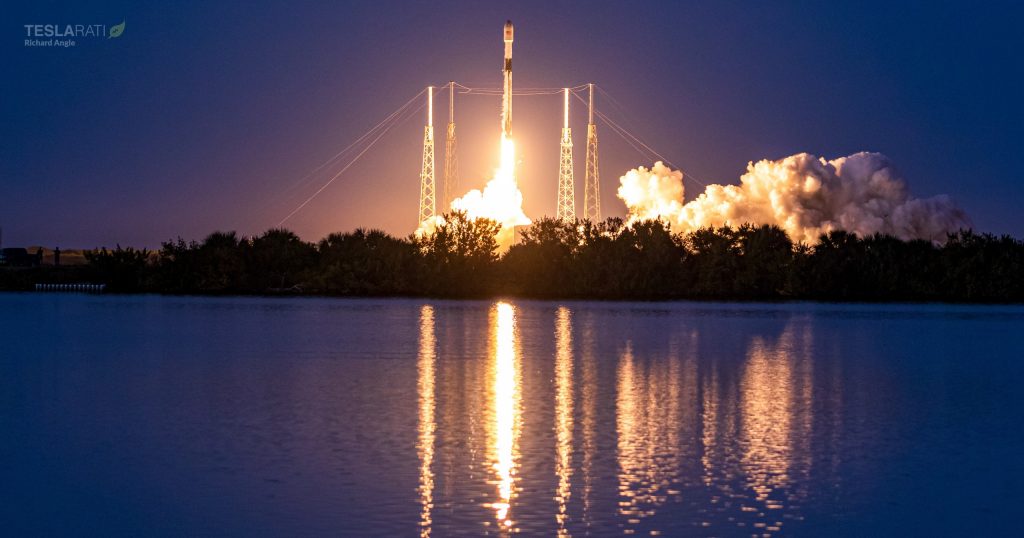
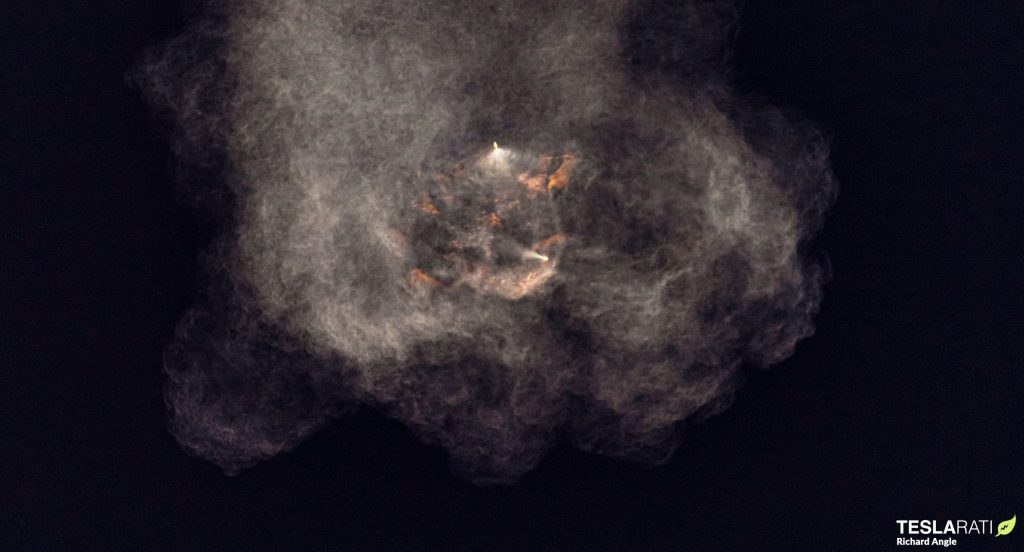
Thanks to near-perfect weather and the timing of the launch about 15 minutes after sunset, Falcon Heavy side core B1052’s first mission as a Falcon 9 booster wound up producing some of the best views of a SpaceX launch in the company’s history. As the rocket ascended, the sky continued to darken for local ground observers. It wasn’t long before Falcon 9’s shiny, white airframe ascended into direct sunlight, which created some extraordinary contrast against the darkening sky for tracking cameras near the launch site.
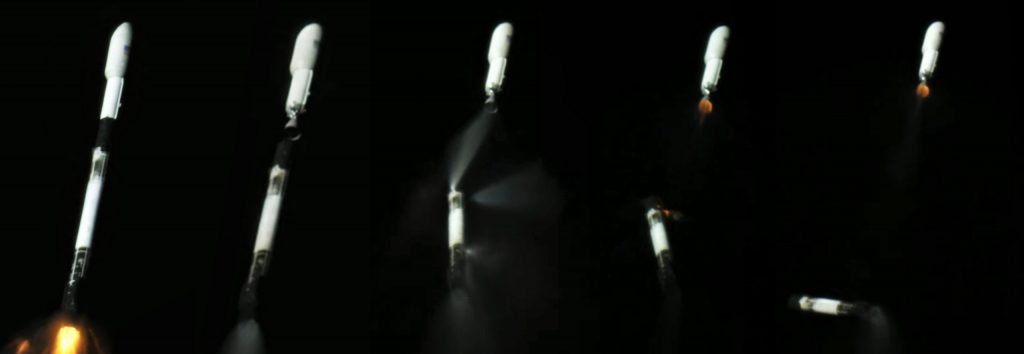
Thanks to the near-perfect conditions and the skill of one particular camera operator, webcast viewers were left with some of the best remote views of booster main engine cutoff (MECO), stage separation, and second stage startup ever recorded – let alone broadcast live. Additionally, the timing of the launch worked out such that the dusk Florida sky was still lit up when booster B1052 touched down at SpaceX’s Cape Canaveral Landing Zone (LZ-1) for the third time.
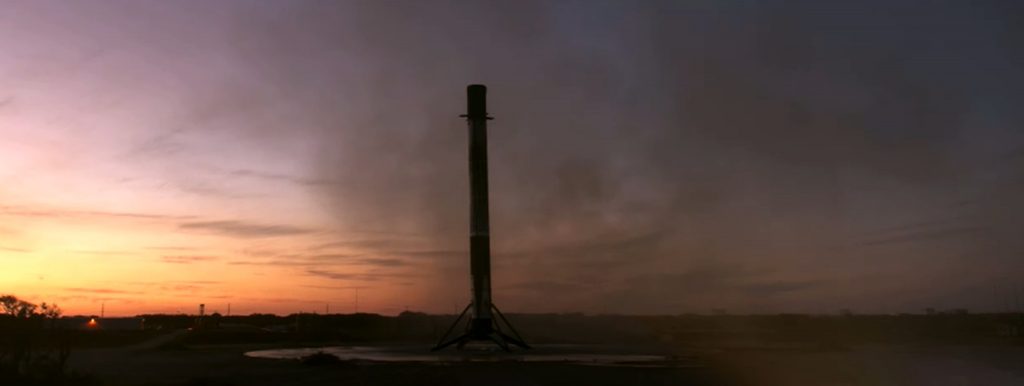
Almost exactly an hour after liftoff, Falcon 9’s upper stage successfully deployed CSG-2 into a polar sun-synchronous orbit (SSO) around 600 km (375 mi) above Earth’s surface, capping off SpaceX’s fourth launch this year. Known as Starlink 4-7, SpaceX’s next launch could occur as early as 1:56 pm EST (18:56 UTC) on Tuesday, February 1st – potentially less than 20 hours after CSG-2. Just ~25 hours after that Another Falcon 9 rocket is scheduled to attempt to launch the United States’ NROL-87 spy satellite(s) from SpaceX’s West Coast launch site around 12:18 pm PST (20:18 UTC), Wednesday, February 2nd. A third Falcon 9 mission – Starlink 4-7 – is also expected to launch sometime later this week.
